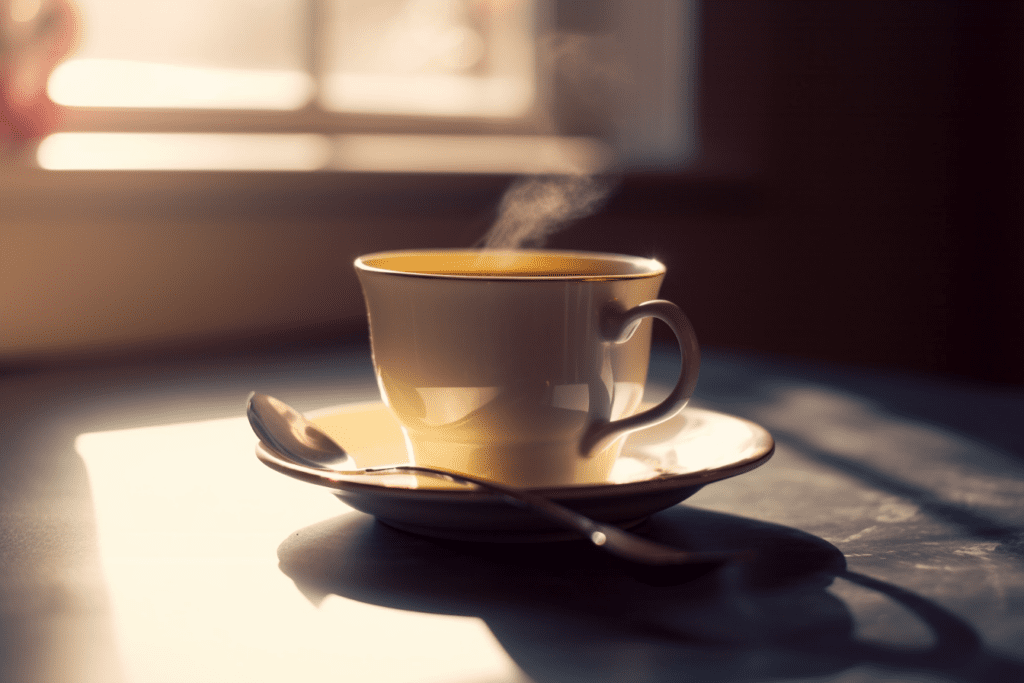Effective grounding exercises to overcome cPTSD and heal from childhood trauma
- Effective grounding exercises to overcome cPTSD and heal from childhood trauma
- 1. What are grounding techniques?
- Defining grounding techniques
- Benefits of using grounding techniques
- 2. Why are grounding techniques important?
- The effects of being ungrounded
- The role of grounding techniques in mental health
- 3. Physical grounding techniques: How to connect with your body
- Body scan meditation
- Breathing exercises and techniques
- Deep Breathing:
- Movement and exercise
- 4. Mindful grounding techniques: How to calm your thoughts
- Mindfulness meditation
- Visualization exercises
- Sensory awareness and focus
- Masala Milk Tea:
- Turkish Mokka:
- Ice cubes:
- Spike balls:
- 5. Emotional grounding techniques: How to manage overwhelming emotions
- Identifying triggers and emotions
- Self-compassion and self-soothing techniques
- Cognitive behavioural techniques for managing emotions
- 6. Creative grounding techniques: How to find inspiration and release stress
- Journaling prompts and techniques
- Art therapy exercises
- Musical expression and dance therapy
- 7. Practical tips for implementing grounding techniques in your daily life
- Choosing techniques that work for you
- Integrating grounding practices into daily routines
- Building a support system for grounding and mental health
- FAQ
- 1. How do I know if grounding techniques are right for me?
- 2. Do I need any special equipment or training to use grounding techniques?
- 3. Can grounding techniques replace therapy or medication?
- 4. How often should I practice grounding techniques?
Grounding techniques are powerful for managing stress, anxiety, and overwhelming emotions. These techniques are designed to help you reconnect with your body, mind, and feelings and return to a calm, centred state. Whether you’re dealing with daily stressors or more significant emotional challenges, grounding techniques can help you feel more present and grounded in the moment. In this article, we’ll explore grounding techniques, why they’re important, and how to use them to find peace and balance.
1. What are grounding techniques?
Defining grounding techniques
Grounding techniques are methods used to help individuals reconnect with the present moment and their surroundings. These techniques can include physical or mental exercises designed to help individuals when they feel overwhelmed or disconnected from their emotions, thoughts, or body.
Benefits of using grounding techniques
Grounding techniques have been shown to have numerous benefits for mental health, including reducing anxiety, stress, and symptoms of depression. These techniques can also improve overall emotional regulation, helping individuals to manage difficult emotions better and regulate their stress levels.
2. Why are grounding techniques important?
The effects of being ungrounded
When individuals feel ungrounded, they may experience anxiety, stress, and a sense of being disconnected from their surroundings. That can lead to difficulty concentrating or feeling present in the moment and physical symptoms such as headaches or muscle tension.
The role of grounding techniques in mental health
Grounding techniques can be an effective tool for those struggling with mental health concerns, as they help individuals to manage negative thoughts and emotions in the moment. These techniques can also be used as a preventative measure, assisting individuals in building resilience to future stressors.
3. Physical grounding techniques: How to connect with your body
Body scan meditation
Body scan meditation involves focusing on individual body parts or sensations to develop a greater awareness of the body. This technique can be practised by lying down or sitting, and involves slowly scanning each part of the body, from the toes up to the head.
Find a quiet, comfortable space: Choose a location where you won’t be disturbed and can sit or lie down. You can sit on a chair with your feet flat on the floor, or lie on your back with your legs straight and arms resting by your sides.
Close your eyes: Gently close your eyes to help focus your attention inward.
Take several deep breaths: Begin by taking a few slow, deep breaths, inhaling through your nose and exhaling through your mouth. That helps to centre your mind and prepare you for the body scan.
Start at your toes: Bring your attention to your toes and feet, noticing any sensations such as tingling, warmth, or tension. You can also mentally flex and release the muscles in this area to deepen your awareness.
Gradually move up your body: Slowly move your focus up your body, one area at a time. Pay attention to sensations in your ankles, calves, knees, thighs, hips, pelvis, lower back, abdomen, chest, upper back, shoulders, arms, hands, neck, face, and head. Take your time and be patient with yourself as you explore each area.
Acknowledge and release tension: As you notice any areas of tension, discomfort, or pain, mentally acknowledge them without judgment. Gently breathe into these areas, imagining the tension releasing and dissipating with each exhale.
Maintain a non-judgmental attitude: It’s essential to approach the body scan with curiosity and kindness, rather than judgment or criticism. If your mind wanders, gently bring it back to the area you were focusing on.
Complete the body scan: Once you have scanned your entire body, take a few more deep breaths and savour the sense of relaxation and connection you’ve cultivated.
Gently return to the present: Slowly wiggle your fingers and toes, and gradually open your eyes. Take a moment to reflect on the experience and any insights you may have gained before resuming your daily activities.
Regularly performing a body scan can help you become more in tune with your body, manage stress, and improve overall well-being.
Progressive Muscle Relaxation works in a similar way.
Breathing exercises and techniques
Breathing exercises are often used in grounding techniques to help individuals regulate their breathing and reduce feelings of anxiety or stress. Techniques such as deep breathing or alternate nostril breathing can be highly effective at helping individuals to calm their mind and body.
Deep Breathing:
Sit or lie down in a comfortable position, with your spine straight, and your body relaxed.
Place one hand on your chest and the other on your abdomen below your ribcage.
Inhale slowly through your nose for a count of four, feeling your abdomen rise as you fill your lungs with air.
Hold your breath for a count of four.
Exhale slowly through your mouth for a count of six, feeling your abdomen fall as you release the air.
Repeat this process for several minutes, focusing on the sensation of your breath and the rise and fall of your abdomen.
This technique helps to regulate your breathing, reduce stress, and increase your awareness of your body in the present moment.
(More techniques are described in a special post about breathing exercises.)
Movement and exercise
Physical movement and exercise can also be used as a grounding technique, as it helps individuals to connect with their body and release physical tension. Mindful movements such as yoga or tai chi can be particularly helpful in promoting relaxation and grounding.
Here’s how to perform mindful walking:
Choose a location: Find a quiet, safe space for walking indoors or outdoors. Ideally, select a location with minimal distractions and a level walking surface.
Begin in a standing position: Stand with your feet hip-width apart, your knees slightly bent, and your arms relaxed by your sides. Take a few deep breaths, inhaling through your nose and exhaling through your mouth.
Focus on your posture: Bring your awareness to your posture, making sure your spine is straight, your shoulders are relaxed, and your head is balanced over your neck.
Set an intention: Before you begin walking, set an intention to stay present and focused on your body’s sensations throughout the exercise.
Begin walking slowly: Start walking at a slow, deliberate pace, paying attention to the movement of your feet as they make contact with the ground. Notice the sensation of your heel touching down, followed by the ball of your foot and your toes.
Engage all your senses: As you walk, engage your senses by noticing the sounds around you, the feeling of the air on your skin, and any smells or sights in your environment. Remain aware of your body’s movements, your breath, and any sensations that arise.
Maintain a non-judgmental attitude: Approach the exercise with curiosity and kindness, without judging your experience or performance. If your mind wanders, gently bring it back to the sensations of walking and your breath.
Pause and reflect: After walking for a set amount of time or distance, stop and take a few deep breaths. Reflect on the experience and any insights you gained during the exercise.
Gradually transition to daily life: Slowly return to your regular pace and activities, carrying the sense of grounding and presence you cultivated during the mindful walk.
Mindful walking is just one example of a grounding moving exercise. You can also try yoga, tai chi, or qi gong, which combine movement with mindfulness and deep breathing to promote grounding and overall well-being.
4. Mindful grounding techniques: How to calm your thoughts
Mindfulness meditation
Mindfulness meditation involves focusing on the present moment and practising non-judgmental awareness of one’s thoughts and emotions. This technique can be highly effective at helping individuals to manage negative or overwhelming thoughts.
Visualization exercises
Visualization exercises involve using mental imagery to promote relaxation and grounding. Individuals can visualize a calming scene or focus on a particular object to redirect their thoughts and promote a sense of inner calm. Read more on this technique in the post about safe space visualization
Sensory awareness and focus
Sensory awareness exercises involve focusing on individual senses, such as touch, taste, or smell, to promote grounding and presence in the moment. These techniques can include focusing on specific sensations or engaging in activities that promote sensory awareness, such as mindful eating or a hot/cold shower.
Preparing and enjoying Masala milk tea and Turkish Mokka can serve as sensory grounding exercises, engaging your senses of smell, taste, touch, and sight. These activities encourage mindfulness and help you stay present in the moment. Here’s how to prepare these beverages:
Masala Milk Tea:
Ingredients:
2 cups water
1 cup milk (or milk alternative)
Two teaspoons of black tea leaves (such as Assam or Ceylon)
1-2 teaspoons sugar or sweetener of choice (adjust to taste)
1/2 teaspoon ground ginger
1/2 teaspoon ground cinnamon
1/4 teaspoon ground cardamom
1/4 teaspoon ground cloves
1/4 teaspoon ground black pepper (optional)
Instructions:
a. Combine water and spices: In a saucepan, combine the water, ground ginger, cinnamon, cardamom, cloves, and black pepper (if using). Bring the mixture to a boil over medium heat.
b. Add the tea leaves: Once the water is boiling, add the black tea leaves and let the mixture simmer for another 2–3 minutes.
c. Add the milk and sweetener: Lower the heat and stir in the milk and sweetener, letting the mixture simmer for 2–3 minutes.
d. Strain and serve: Remove the saucepan from the heat, strain the tea into cups or mugs, and enjoy the warm, aromatic Masala milk tea.
Turkish Mokka:
Ingredients:
2 cups cold water
Two heaping teaspoons of finely ground coffee (preferably a medium or dark roast)
1-2 teaspoons sugar or sweetener of choice (adjust to taste)
1/8 teaspoon ground cardamom (optional)
A small pinch of ground cinnamon (optional)
Instructions:
a. Combine ingredients: In a small saucepan or a traditional cezve (a Turkish coffee pot), combine the cold water, finely ground coffee, sugar or sweetener, cardamom, and cinnamon (if using). Do not stir.
b. Heat the mixture: Place the saucepan or cezve over low heat, allowing the coffee to sink and the sugar to dissolve without stirring. As the mixture heats, the coffee will start to foam.
c. Watch for the foam to rise: Before the coffee comes to a boil and the foam overflows, remove the saucepan or cezve from the heat.
d. Pour and serve: Pour a small amount of the frothy coffee into each cup or mug, then return the saucepan or cezve to the heat. Once the coffee foams again, remove it from the heat, and pour the remaining coffee into the cups or mugs.
To use these preparations as sensory grounding exercises, focus on the sounds, smells, and sights during the process. Notice the aromas released from the spices and coffee, the ingredients’ colours and textures, and the saucepan’s or cezve’s warmth. When you taste the beverages, savour the flavours and the sensations in your mouth. Engage in the experience mindfully, staying present and connected to your senses.
Using ice cubes and spike balls are stronger grounding techniques that engage your tactile senses, bringing you back to the present moment and helping to reduce stress or anxiety. Here’s how to use them:
Ice cubes:
Hold an ice cube in your hand and focus on the cold sensation it produces. Notice how the coldness travels through your hand and up your arm.
Observe the ice cube as it begins to melt, feeling the wetness and the changes in its shape and size.
You can also place the ice cube against other parts of your body, such as your forehead or the back of your neck, to bring awareness to those areas.
Pay attention to your breath and any emotions or thoughts that arise as you experience the cold sensation. Remember to maintain a non-judgmental attitude and bring your focus back to the ice cube if your mind wanders.
Spike balls:
Spike balls
(Amazon)
Hold a spike ball in your hand and gently roll it between your palms or squeeze it to feel the pressure and texture of the spikes against your skin.
Place the spike ball on the floor and roll it under your feet, focusing on the sensations as the spikes massage and stimulate pressure points on your soles.
You can also use the spike ball on other parts of your body, such as your back, shoulders, or legs, by rolling it against your skin or pressing it into your muscles.
As you engage with the spike ball, maintain awareness of your breath, the sensations in your body, and any thoughts or emotions that arise. Gently bring your focus back to the spike ball if your mind wanders.
Both ice cubes and spike balls provide intense tactile stimulation that can help ground you in the present moment in case of overwhelming emotions. But even without emotional dysregulation, focusing on sensations they create and maintaining a mindful, non-judgmental attitude, you can effectively use these tools to manage stress and anxiety.
(The 54321 exercise and the butterfly hug also belong to this category.)
5. Emotional grounding techniques: How to manage overwhelming emotions
Emotions can be overwhelming, and it can be challenging to control them at times. Here are some emotional grounding techniques to help you manage your emotions better.
Identifying triggers and emotions
The first step to managing your emotions is to identify what triggers you. Take note of the situations, people, or events that bring out strong emotions in you. Once you’ve identified your triggers, you can work towards reducing their impact on your emotions.
It’s also essential to identify and name your emotions, which can give you a deeper understanding of how and why you feel the way you do. Be specific about your emotions – instead of just feeling “bad,” identify whether you feel sad, angry or frustrated.
Self-compassion and self-soothing techniques
When emotions feel overwhelming, it’s important to be kind to yourself. Practice self-compassion by giving yourself permission to feel your emotions without judging yourself for them. Treat yourself with kindness and understanding, just like you would treat a friend who is going through a tough time.
Self-soothing techniques, such as deep breathing or a warm bath, can also help you calm down and feel more grounded.
Cognitive behavioural techniques for managing emotions
Cognitive behavioural techniques can help you manage your emotions by changing your thoughts. For example, if you tend to catastrophize situations, try reframing your thoughts to be more realistic and optimistic. You can also challenge negative thoughts by asking yourself if they are valid and if there is evidence to support them.
(Thought stopping and REST are described in other posts in this wiki blog.)
6. Creative grounding techniques: How to find inspiration and release stress
Sometimes, traditional grounding techniques may not work for everyone, and that’s where creative grounding techniques come in. Here are some ideas to help you find inspiration and release stress through creative means.
Journaling prompts and techniques
Journaling can be a powerful tool to help you reflect on your thoughts and emotions. You can try free writing, where you write continuously for a set amount of time, say 10 minutes, without worrying about grammar or spelling. You can also use journaling prompts to help you explore specific topics or emotions.
Art therapy exercises
Art therapy exercises can help you express yourself and process your emotions. You don’t have to be a professional artist to benefit from art therapy – simply doodling, colouring, or painting can help you feel more grounded.
Musical expression and dance therapy
Music and dance can be great ways to release stress and connect with your emotions. You can try creating a playlist of songs that make you feel calm or energized, or try dancing to express your emotions.
7. Practical tips for implementing grounding techniques in your daily life
Grounding techniques can help manage emotions and reduce stress, but it can be challenging to remember to use them when needed. Here are some practical tips to help you integrate grounding techniques into your daily life.
Choosing techniques that work for you
Not all grounding techniques will work for everyone. Experiment with different techniques and find what works for you. Having a few methods in your toolbox to use in different situations can be helpful.
Integrating grounding practices into daily routines
Try to incorporate grounding techniques into your daily routines. For example, you can practice deep breathing while waiting for your coffee to brew or take a few minutes to journal before bed.
Building a support system for grounding and mental health
Having a support system can help manage emotions and reduce stress. Reach out to friends, family or a mental health professional for support when needed. Joining a support group can also provide a sense of community and understanding. Incorporating grounding techniques into your daily routine can profoundly impact your mental and emotional well-being. Whether you choose physical, mindful, emotional, or creative techniques, remember that the goal is to find what works for you and to be consistent in your practice. By taking the time to ground yourself, you can find greater peace and balance in your life, and improve your overall sense of well-being.

FAQ
1. How do I know if grounding techniques are right for me?
Grounding techniques can benefit anyone who experiences stress, anxiety, or overwhelming emotions. If you’re investigating how to manage these feelings and find greater peace and balance in your life, grounding techniques may be a helpful tool to explore.
2. Do I need any special equipment or training to use grounding techniques?
Most grounding techniques can be done with little to no equipment and do not require any special training. However, some techniques, such as yoga or meditation, may benefit from guidance from a trained practitioner or teacher.
3. Can grounding techniques replace therapy or medication?
Grounding techniques can be a helpful complement to therapy and medication, but they should not be used as a replacement. If you’re struggling with mental health challenges, it’s important to seek the guidance of a mental health professional who can help you develop an individualized treatment plan.
4. How often should I practice grounding techniques?
The frequency of your grounding practice will depend on your individual needs and lifestyle. However, incorporating grounding techniques into your daily routine can help you maintain a sense of calm and balance throughout the day. Aim to practice grounding techniques whenever you feel stressed or overwhelmed and regularly as part of your self-care routine.



